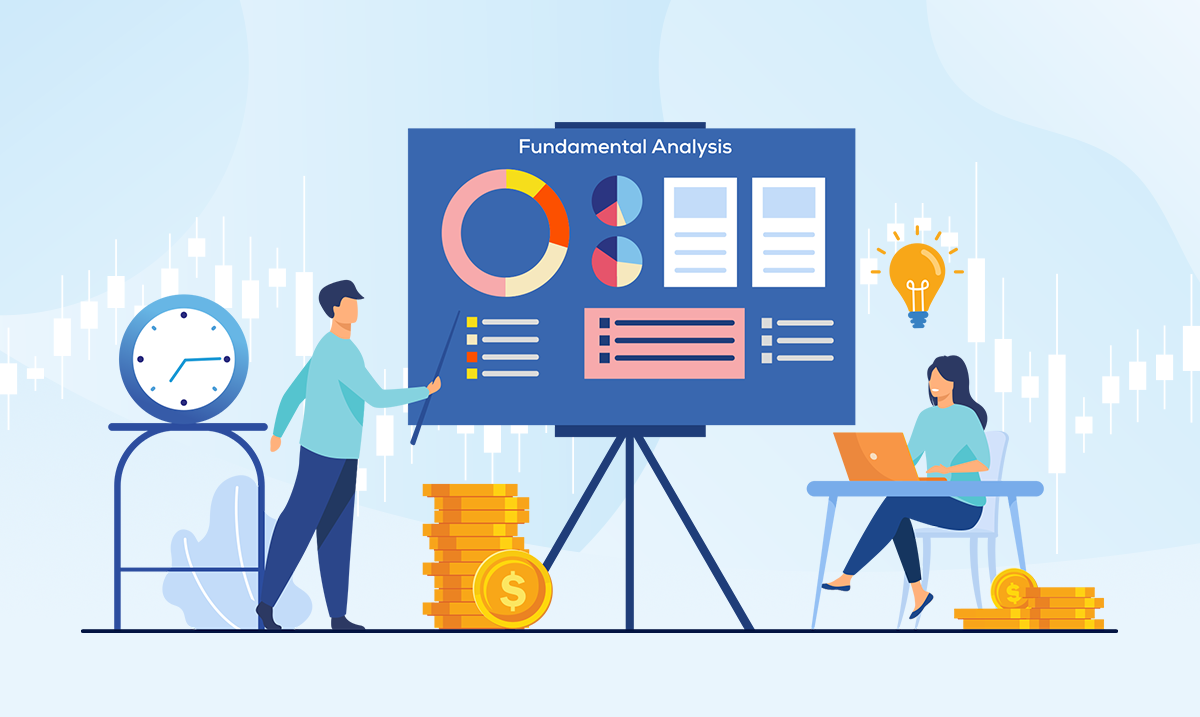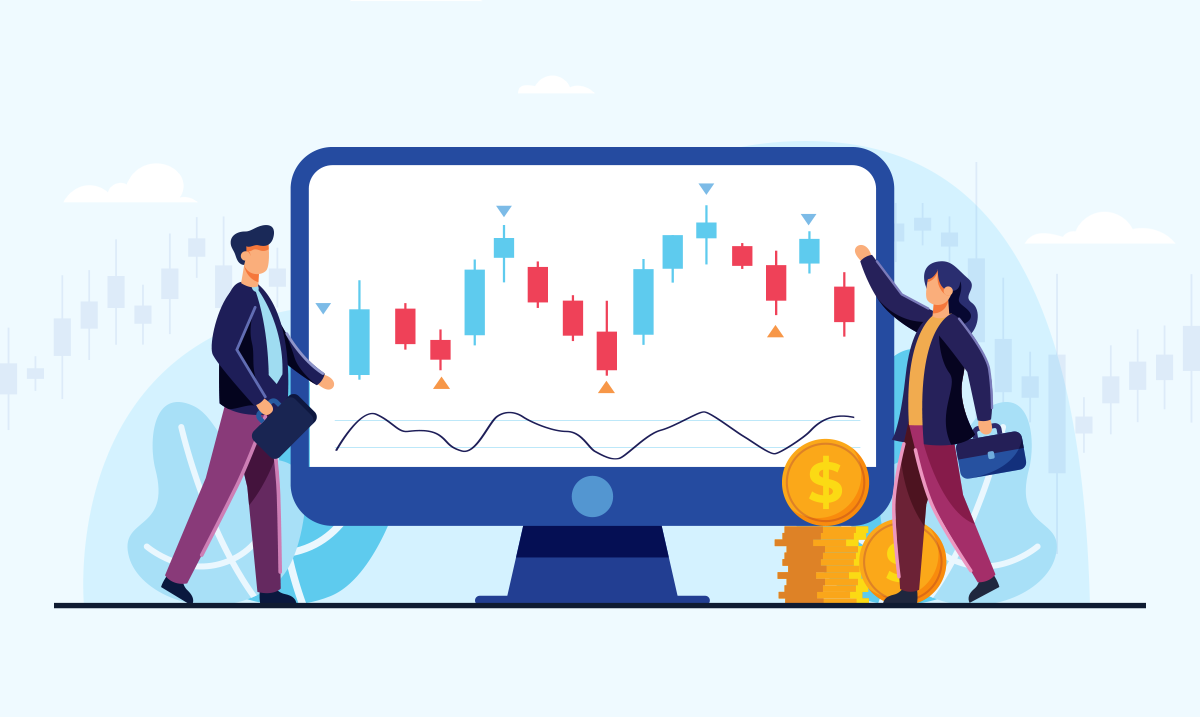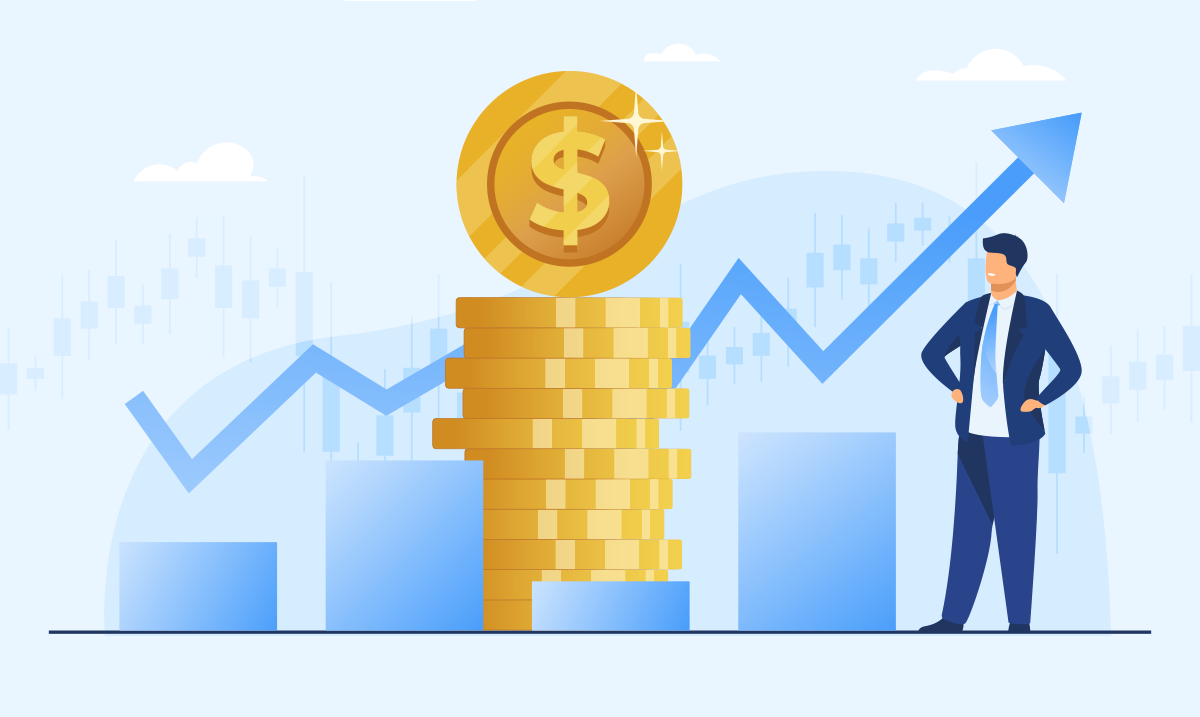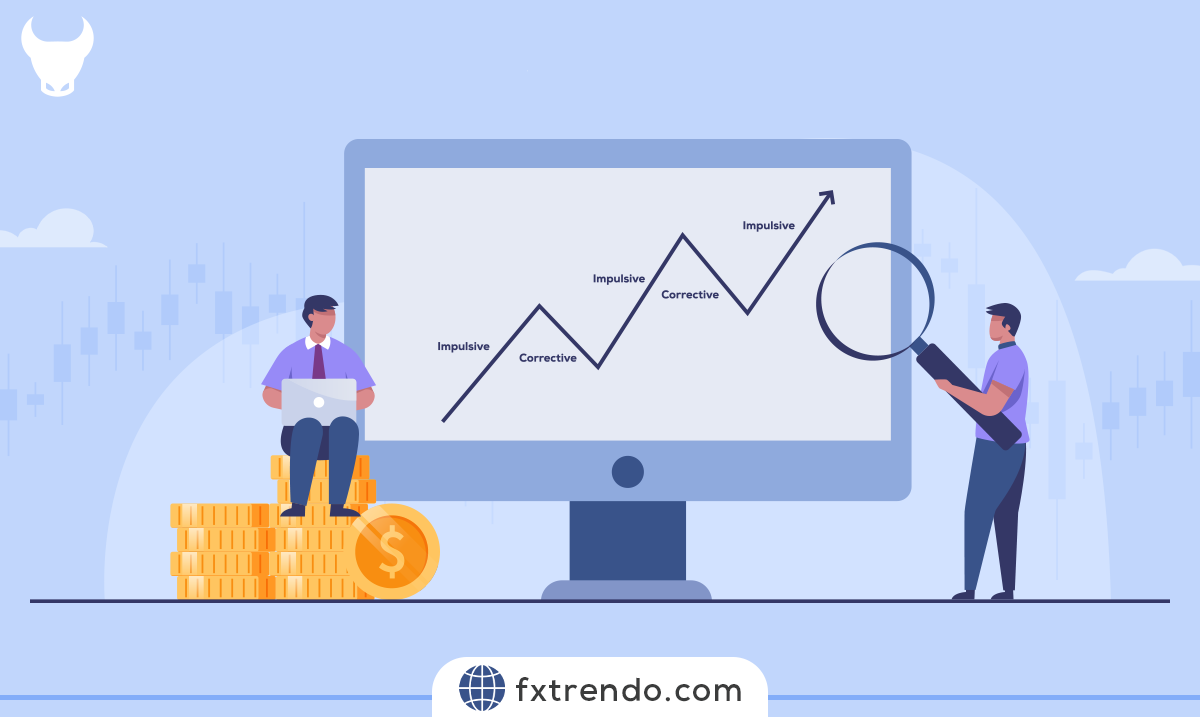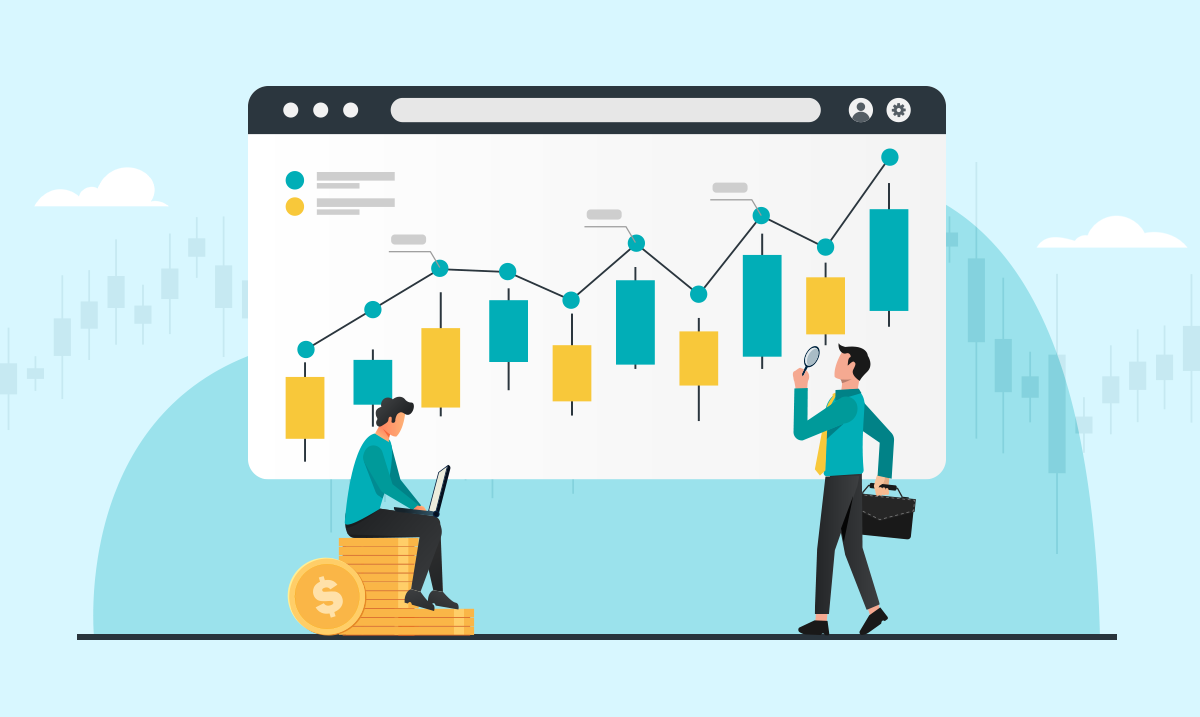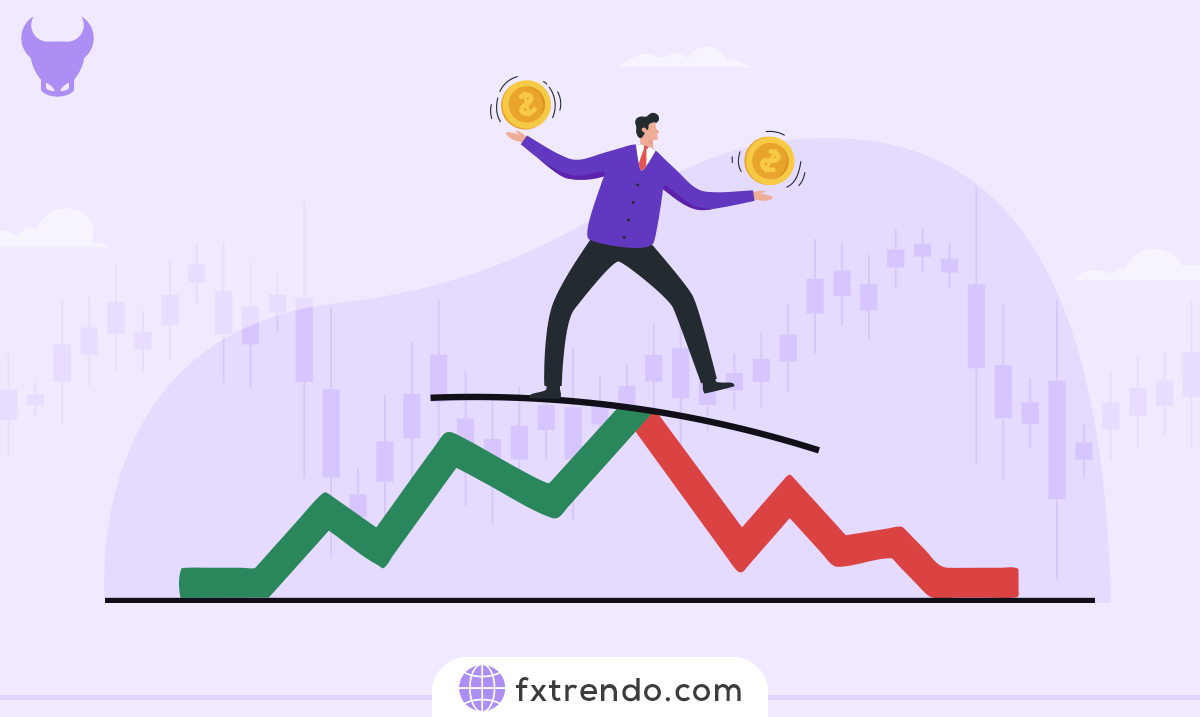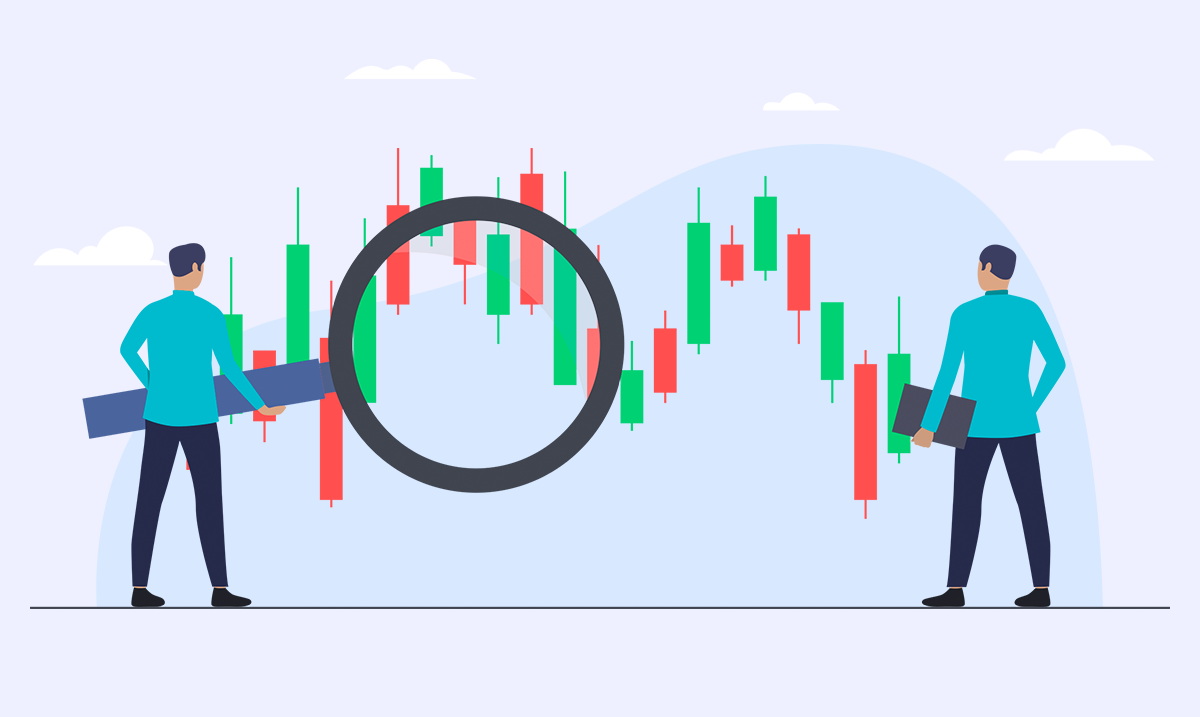How to Trade EUR/USD Currency Pair? The Ultimate Guide for the EUR/USD Currency Pair in 2024
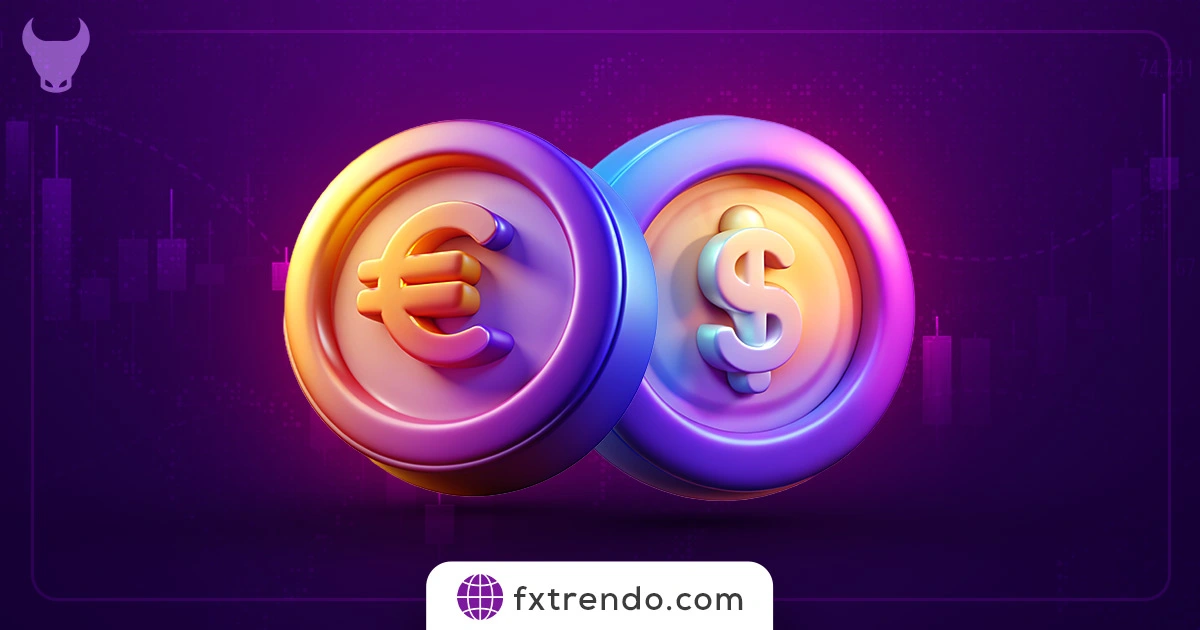

This guide covers everything from the basics of forex trading to advanced strategies for the EUR/USD pair. Whether you’re looking to capitalize on market trends, manage risks, or gain a deeper understanding of the factors influencing this currency pair, this guide has you covered.
Dive into the world of forex trading and discover the secrets to successfully trading the EUR/USD currency pair in 2024.
Contents
What are Currency Pairs in Forex?
In forex, currencies are always traded in pairs. A currency pair consists of two national currencies coupled together for trading on the foreign exchange (FX) market. These pairs represent the value of one currency against another.
The first currency in the pair is called the base currency, and the second currency is the quote currency. For example, in the EUR/USD pair, the euro (EUR) is the base currency, and the U.S. dollar (USD) is the quote currency.
The exchange rate tells you how much of the quote currency is needed to purchase one unit of the base currency. So, if the EUR/USD exchange rate is 1.20, it means 1 euro can be exchanged for 1.20 U.S. dollars.
Currency pairs are categorized into three main types:
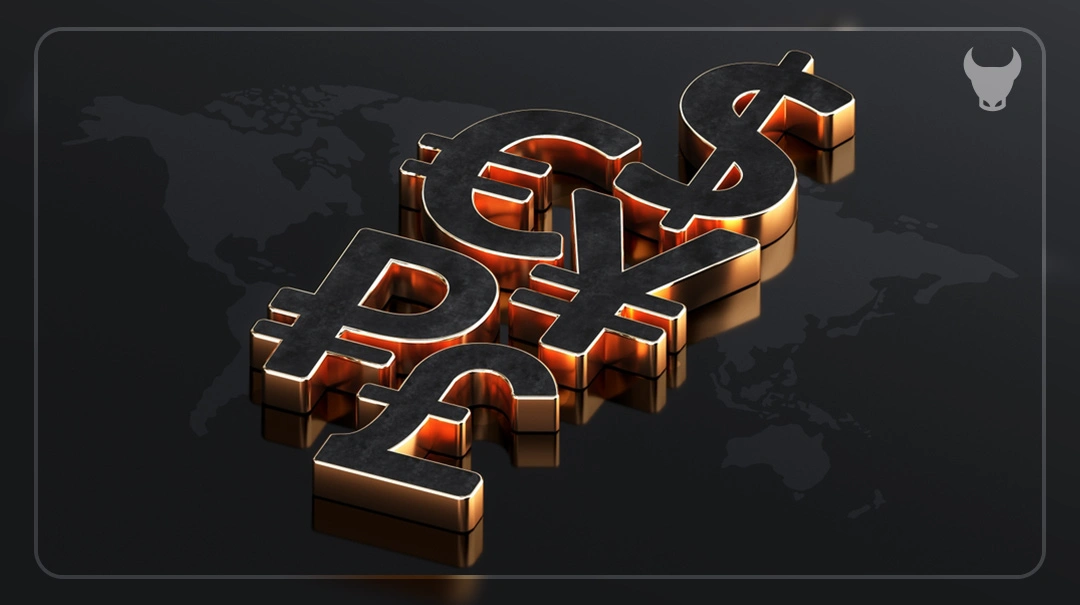

1. Major Pairs: These include the most traded currencies in the world, such as EUR/USD, USD/JPY (U.S. dollar/Japanese yen), and GBP/USD (British pound/U.S. dollar). Major pairs always include the U.S. dollar and are known for their high liquidity and tight spreads.
2. Minor Pairs: These pairs do not include the U.S. dollar but involve other major currencies. Examples are EUR/GBP (euro/British pound) and AUD/JPY (Australian dollar/Japanese yen). Minor pairs are also liquid but less so than major pairs.
3. Exotic Pairs: These consist of one major currency paired with a currency from an emerging or smaller economy. Examples include USD/TRY (U.S. dollar/Turkish lira) and EUR/SEK (euro/Swedish krona). Exotic pairs tend to have lower liquidity and higher spreads.
What is EUR/USD?
The EUR/USD is the most traded currency pair in the forex market, representing the exchange rate between the euro (EUR) and the U.S. dollar (USD). This pair shows how many U.S. dollars are needed to buy one euro. For example, if the EUR/USD exchange rate is 1.10, it means 1 euro can be exchanged for 1.10 U.S. dollars.
The euro was introduced as an accounting currency in 1999 and began circulating in 2002, replacing the national currencies of many European Union (EU) member countries.
It was created to unify and stabilize the economies of the EU, making trade and investment easier across member states. The US dollar, on the other hand, has been the primary currency of the United States since the late 18th century and is widely used in international trade and finance.
The EUR/USD pair is significant because it involves two of the world’s largest economies. It is the most traded currency pair globally, reflecting the economic health and policies of both the Eurozone and the United States.
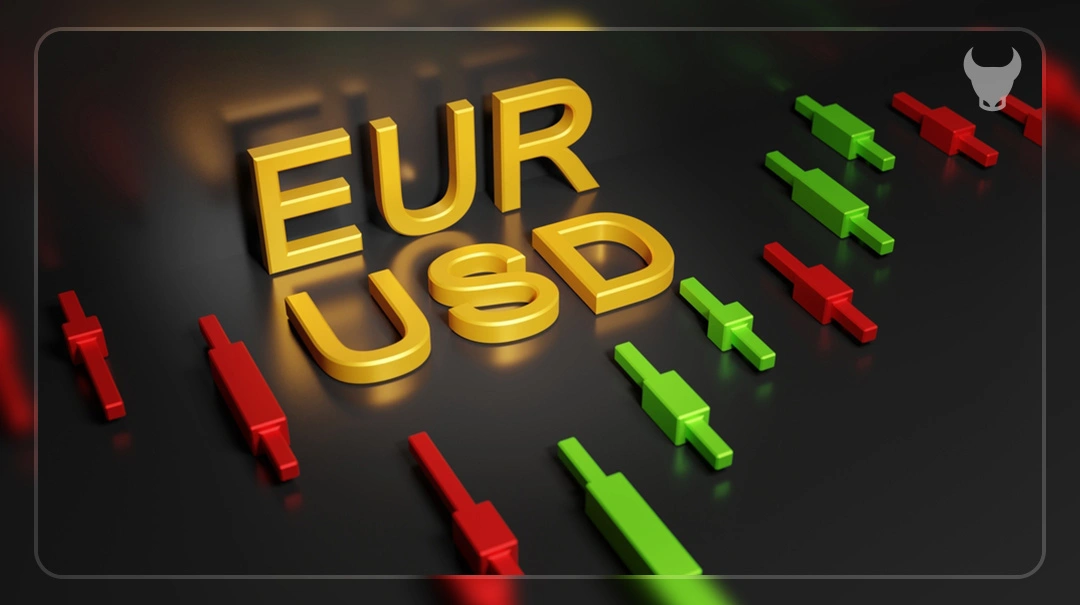

Read more: What is the USDJPY Currency Pair in FX?
What is the EUR/USD Exchange Rate?
The EUR/USD exchange rate shows the value of one euro in U.S. dollars. It indicates how many U.S. dollars are needed to buy one euro. For example, if the exchange rate is 1.10, it means 1 euro can be exchanged for 1.10 U.S. dollars.
This rate is influenced by economic indicators, interest rates, and geopolitical events. For instance, if the European Central Bank raises interest rates, the euro might strengthen against the U.S. dollar, leading to a higher exchange rate. Conversely, strong U.S. economic data might strengthen the U.S. dollar, causing the exchange rate to drop.
The EUR/USD exchange rate is important for traders, businesses, and travelers. Traders use it for forex market decisions, businesses rely on it for international transactions, and travelers need it to understand currency value when traveling between the Eurozone and the United States.
What are the Factors Affecting the EUR/USD Currency Pair?
The EUR/USD currency pair is influenced by various factors that cause its exchange rate to fluctuate. Understanding these factors is essential for traders to make informed decisions. Here are some key factors:


1. Economic Indicators: Economic data from both the Eurozone and the United States, such as GDP growth, employment figures, and inflation rates, significantly impact the EUR/USD pair. Strong economic performance in one region compared to the other can affect the exchange rate.
2. Central Bank Policies: Decisions made by the European Central Bank (ECB) and the Federal Reserve (Fed) play a crucial role. For example, if the ECB raises interest rates, the euro might strengthen against the U.S. dollar. Conversely, if the Fed raises rates, the U.S. dollar might appreciate.
3. Geopolitical Events: Political stability and events such as elections, trade agreements, and conflicts can influence the EUR/USD pair. For instance, uncertainty in the Eurozone or the U.S. can lead to fluctuations in the exchange rate.
4. Interest Rate Differentials: The difference in interest rates between the Eurozone and the U.S. can affect the EUR/USD pair. Higher interest rates in one region can attract investors, leading to an appreciation of that region’s currency.
5. Economic Reports: Regularly released economic reports, such as employment data, inflation figures, and GDP growth, provide insights into the health of the economies and can cause short-term movements in the EUR/USD exchange rate.
By keeping an eye on these factors, traders can better anticipate changes in the EUR/USD exchange rate and make more informed trading decisions.
Why Is the EUR/USD Forex the Best Pair to Trade?
The EUR/USD currency pair is widely considered the best pair to trade in the forex market for several reasons:
1. High Liquidity: The EUR/USD pair is the most actively traded currency pair in the world. This high trading volume ensures ample liquidity, meaning traders can buy and sell large amounts without significantly affecting the price. High liquidity also means tighter spreads, which reduces trading costs.
2. Tight Spreads: The spread is the difference between the bid and ask price of a currency pair. The EUR/USD pair is known for having some of the lowest spreads among major currency pairs. Tight spreads are beneficial for traders as they can enter and exit positions at minimal cost, maximizing potential profits.
3. Volatility: The EUR/USD pair exhibits moderate volatility, providing opportunities for profit without excessive risk. Volatility refers to the magnitude of price fluctuations in a currency pair. The EUR/USD pair’s volatility is influenced by various economic, political, and social factors, which can lead to significant price movements.
4. Suitability for Technical Analysis: The EUR/USD pair is well-suited for technical analysis, as it is influenced by a wide range of economic indicators, such as GDP, inflation, and interest rates. These fundamental factors can have a significant impact on the pair’s price movements, providing traders with valuable information to base their trading decisions on.
5. Active Trading Sessions: The forex market operates 24 hours a day, five days a week, and the EUR/USD pair is actively traded during all major trading sessions. This continuous trading activity ensures that there are always opportunities for traders to enter and exit positions.
6. Correlation with Other Pairs: The EUR/USD pair tends to have a negative correlation with the USD/CHF pair and a positive correlation with the GBP/USD pair. Understanding these correlations can help traders make more informed decisions and develop effective trading strategies.
What are the Risks of Trading EUR/USD?
Trading the EUR/USD currency pair can be rewarding, but it also comes with risks. Understanding these risks is crucial for making informed decisions. Here are some key risks to consider:
1. Market Volatility: The EUR/USD pair can experience significant price fluctuations due to economic data releases, geopolitical events, and market sentiment. This volatility can lead to rapid changes in the exchange rate, resulting in substantial gains or losses.
2. Leverage Risk: Forex trading often involves the use of leverage, allowing traders to control larger positions with a smaller amount of capital. While leverage can amplify profits, it can also magnify losses. Traders need to use leverage cautiously and have a solid risk management strategy.
3. Economic Factors: The EUR/USD exchange rate is influenced by various economic indicators, such as GDP growth, employment figures, and inflation rates. Unexpected changes in these indicators can lead to sudden movements in the exchange rate, affecting trading positions.
4. Interest Rate Changes: Decisions by the European Central Bank (ECB) and the Federal Reserve (Fed) regarding interest rates can significantly impact the EUR/USD pair. Changes in interest rates can affect the attractiveness of holding euros or U.S. dollars, leading to shifts in the exchange rate.
5. Political and Geopolitical Events: Political stability and events such as elections, trade agreements, and conflicts can influence the EUR/USD pair. Uncertainty or instability in the Eurozone or the U.S. can lead to increased volatility and unpredictable price movements.
6. Liquidity Risk: While the EUR/USD pair is highly liquid, there can be times of reduced liquidity, especially during major news events or market holidays. Reduced liquidity can lead to wider spreads and slippage, making it more challenging to execute trades at desired prices.
7. Psychological Factors: Trading can be emotionally challenging. Fear, greed, and overconfidence can lead to poor decision-making and increased risk. It’s important for traders to maintain discipline and stick to their trading plan.
How to Trade EUR/USD in Forex?
Trading the EUR/USD currency pair involves several steps and strategies. Here’s a simple guide to get you started:
1. Understand the Basics: The EUR/USD pair represents the exchange rate between the euro and the U.S. dollar. It shows how many U.S. dollars are needed to buy one euro. This pair is popular due to its high liquidity and tight spreads.
2. Choose a Reliable Broker: Select a reputable forex broker that offers competitive spreads, robust trading platforms, and excellent customer support. Ensure the broker is regulated by a recognized authority.
3. Create a Trading Plan: Develop a trading plan that outlines your goals, risk tolerance, and strategies. A well-defined plan helps you stay disciplined and make informed decisions.
4. Use Technical Analysis: Analyze price charts and use technical indicators to identify trends and potential entry and exit points. Common indicators for EUR/USD include moving averages, RSI, and MACD.
5. Monitor Economic Indicators: Keep an eye on economic data releases from both the Eurozone and the United States. Reports on GDP, employment, inflation, and interest rates can significantly impact the EUR/USD exchange rate.
6. Practice Risk Management: Use stop-loss and take-profit orders to manage your risk. Never risk more than a small percentage of your trading capital on a single trade.
7. Stay Informed: Stay updated with the latest news and developments in the forex market. Geopolitical events, central bank decisions, and market sentiment can all influence the EUR/USD pair.
8. Start with a Demo Account: If you’re new to forex trading, start with a demo account to practice your strategies without risking real money. This helps you gain experience and confidence.
9. Transition to Live Trading: Once you’re comfortable with your strategies, transition to a live trading account. Start with small positions and gradually increase your trade size as you gain experience.
10. Review and Adjust: Regularly review your trades and adjust your strategies as needed. Continuous learning and adaptation are key to successful trading.
By following these steps and staying disciplined, you can effectively trade the EUR/USD currency pair and take advantage of the opportunities in the forex market.
How to Analyze the EUR/USD Currency Pair?
Analyzing the EUR/USD currency pair involves a combination of technical and fundamental analysis, as well as understanding market sentiment. Here’s a simple guide to help you get started:
1. Technical Analysis: Study price charts and use technical indicators to identify trends and potential entry and exit points. Common indicators for the EUR/USD pair include moving averages, Relative Strength Index (RSI), and MACD. Technical analysis helps traders understand market patterns and make informed decisions based on historical price movements.
2. Fundamental Analysis: Focus on economic indicators and news events that impact the EUR/USD exchange rate. Key economic data to monitor includes GDP growth, employment figures, inflation rates, and interest rate decisions from the European Central Bank (ECB) and the Federal Reserve (Fed). Understanding these fundamentals helps traders anticipate market movements and adjust their strategies accordingly.
3. Market Sentiment: Traders’ perceptions and attitudes towards the Eurozone and U.S. economies can drive the EUR/USD exchange rate. Positive sentiment towards one economy can lead to a stronger currency, while negative sentiment can weaken it. Market sentiment is often influenced by news events, economic reports, and geopolitical developments.
4. Geopolitical Events: Political stability and events such as elections, trade agreements, and conflicts can significantly impact the EUR/USD pair. For example, uncertainty in the Eurozone or the U.S. can lead to increased volatility and unpredictable price movements. Staying informed about geopolitical events helps traders anticipate potential market shifts.
5. Interest Rate Differentials: The difference in interest rates between the Eurozone and the U.S. can affect the EUR/USD exchange rate. Higher interest rates in one region can attract investors, leading to an appreciation of that region’s currency. Monitoring interest rate decisions from the ECB and the Fed is crucial for understanding potential market movements.
6. Economic Reports: Regularly released economic reports provide insights into the health of the Eurozone and U.S. economies. Reports on GDP, employment, inflation, and consumer confidence can cause short-term movements in the EUR/USD exchange rate. Traders should keep an eye on these reports to stay informed about potential market changes.
Trading Strategies for EUR/USD Currency Pair
Trading the EUR/USD currency pair can be approached with various strategies, each catering to different trading styles and goals. Here are some effective strategies to consider:
1. Day Trading: Day traders capitalize on short-term price movements within a single trading day. They use technical analysis tools like moving averages, RSI, and MACD to identify entry and exit points. The goal is to make quick profits by taking advantage of small price fluctuations.
2. Swing Trading: Swing traders hold positions for several days to weeks, aiming to profit from medium-term price movements. They use a combination of technical and fundamental analysis to identify trends and potential reversals. Key indicators include trend lines, Fibonacci retracements, and support and resistance levels.
3. Scalping: Scalpers make numerous small trades throughout the day, aiming to profit from tiny price movements. This strategy requires a high level of discipline and quick decision-making. Scalpers often use one-minute or five-minute charts and rely on tight spreads to minimize trading costs.
4. Position Trading: Position traders hold positions for weeks, months, or even years, focusing on long-term trends. They base their decisions on fundamental analysis, such as economic indicators, interest rate differentials, and geopolitical events. Position trading requires patience and a strong understanding of the broader market context.
5. News Trading: News traders take advantage of market volatility caused by economic data releases, central bank announcements, and geopolitical events. They closely monitor the economic calendar and react quickly to news that can impact the EUR/USD exchange rate. This strategy requires staying informed and being able to make swift decisions.
6. Trend Following: Trend followers aim to profit from sustained price movements in one direction. They use technical indicators like moving averages and trend lines to identify and follow trends. This strategy works well in markets with clear directional movements and requires traders to be patient and disciplined.
7. Range Trading: Range traders identify key support and resistance levels and trade within these boundaries. They buy at support levels and sell at resistance levels, aiming to profit from price oscillations within a defined range. This strategy is effective in markets with low volatility and no clear trend.
Tips for Successful EUR/USD Trading
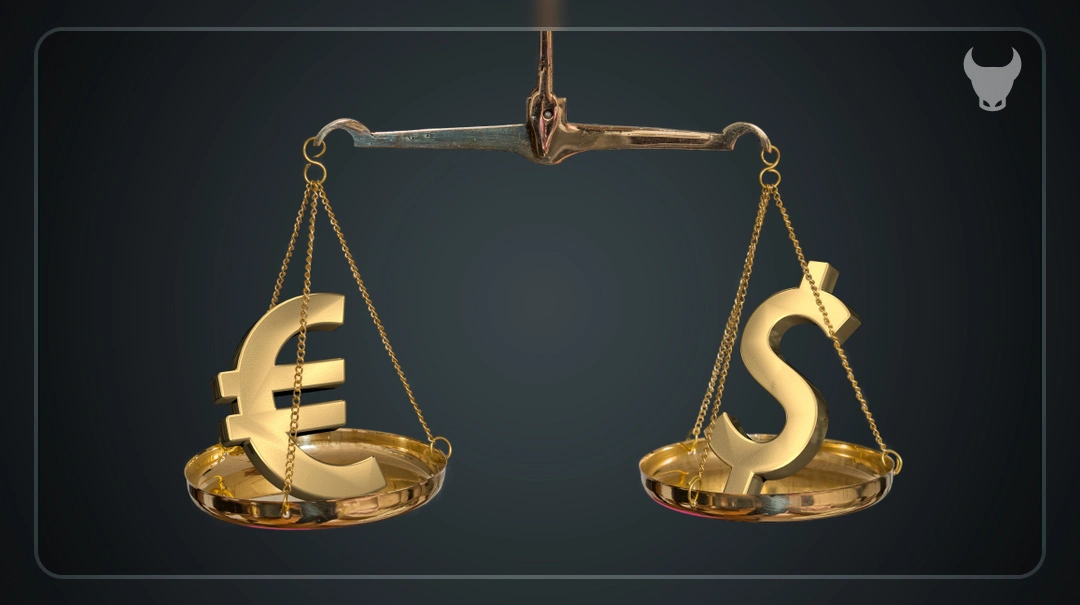

Trading the EUR/USD currency pair can be rewarding if approached with the right strategies and mindset. Here are some essential tips to help you succeed:
1. Stay Informed
Keep up with the latest economic news and data releases from both the Eurozone and the United States. Key indicators like GDP growth, employment figures, and inflation rates can significantly impact the EUR/USD exchange rate. Regularly checking economic calendars can help you anticipate market movements.
2. Use Technical Analysis
Technical analysis involves studying price charts and using indicators to predict future price movements. Tools like moving averages, Relative Strength Index (RSI), and MACD can help you identify trends and potential entry and exit points. Practice using these tools to enhance your trading decisions.
3. Develop a Trading Plan
Having a clear trading plan is crucial. Define your trading goals, risk tolerance, and strategies before entering the market. Stick to your plan and avoid making impulsive decisions based on emotions.
4. Manage Your Risk
Effective risk management is key to long-term success. Use stop-loss orders to limit potential losses and never risk more than a small percentage of your trading capital on a single trade. Leverage should be used cautiously, as it can amplify both gains and losses.
5. Trade during Peak Hours
The EUR/USD pair is most active during the overlap of the European and US trading sessions. Trading during these peak hours can provide better liquidity and tighter spreads, making it easier to execute trades at desired prices.
6. Monitor Central Bank Policies
Decisions by the European Central Bank (ECB) and the US Federal Reserve can have a significant impact on the EUR/USD exchange rate. Keep an eye on interest rate changes and monetary policy announcements to stay ahead of potential market shifts.
7. Practice Patience and Discipline
Successful trading requires patience and discipline. Avoid chasing the market or making hasty decisions. Stick to your trading plan and be patient for the right opportunities to arise.
8. Learn from Your Trades
Regularly review your trades to understand what worked and what didn’t. Keeping a trading journal can help you track your performance and identify areas for improvement.
By following these tips and continuously educating yourself, you can improve your chances of success in trading the EUR/USD currency pair.
Choosing a Broker for Trading EUR/USD
Selecting the right broker is crucial for successful trading of the EUR/USD currency pair. Here are some key factors to consider:
1. Regulation and Trustworthiness: Ensure the broker is regulated by a recognized authority, such as the Financial Conduct Authority (FCA) in the UK or the Commodity Futures Trading Commission (CFTC) in the US. Regulation ensures that the broker adheres to strict standards and provides a level of security for your funds.
2. Trading Platform: A user-friendly and reliable trading platform is essential. Look for platforms that offer advanced charting tools, technical indicators, and real-time data. Popular platforms include MetaTrader 4 (MT4), MetaTrader 5 (MT5), and cTrader.
3. Spreads and Commissions: Compare the spreads and commissions charged by different brokers. The EUR/USD pair typically has tight spreads, but it’s important to choose a broker that offers competitive rates to minimize trading costs.
4. Leverage Options: Leverage allows you to control larger positions with a smaller amount of capital. However, it also increases risk. Choose a broker that offers flexible leverage options and ensure you understand the risks involved.
5. Customer Support: Reliable customer support is vital, especially if you encounter issues with your account or trading platform. Look for brokers that offer 24/7 support through various channels, such as live chat, email, and phone.
6. Deposit and Withdrawal Methods: Check the available deposit and withdrawal methods and ensure they are convenient for you. Also, consider the processing times and any associated fees.
7. Educational Resources: A good broker should provide educational resources, such as webinars, tutorials, and market analysis, to help you improve your trading skills and stay informed about market trends.
8. Account Types: Different brokers offer various account types to cater to different trading needs. Consider whether the broker offers demo accounts, standard accounts, and premium accounts with additional features.
9. Reputation and Reviews: Research the broker’s reputation by reading reviews from other traders. Look for feedback on the broker’s reliability, execution speed, and overall trading experience.
By carefully considering these factors, you can choose a broker that best suits your trading needs and enhances your chances of success in trading the EUR/USD currency pair.
Recommended Brokers for 2024 trading EUR/USD in 2024
Here are some reputable brokers for trading EUR/USD in 2024:
1. Pepperstone: Known for its competitive spreads and excellent customer support, Pepperstone is a popular choice among traders. It offers multiple regulated licenses and a user-friendly trading platform.
2. Plus500: This broker is well-regulated and offers a wide range of trading instruments. Plus500 is known for its low minimum deposit requirements and user-friendly platform.
3. XM: XM is praised for its educational resources and copy trading features. It offers multiple regulated licenses and periodic competitions and bonuses.
4. Interactive Brokers: Known for its low fees and extensive range of trading instruments, Interactive Brokers is a top choice for many traders. It offers a robust trading platform and excellent customer support.
5. Trendo International Broker: Trendo offers a diverse range of tradable assets, competitive pricing with low spreads, and responsive customer support. However, it’s important to note that Trendo lacks regulatory oversight, which may raise concerns about user protection and transparency.
Conclusion
Trading the EUR/USD currency pair in 2024 offers both opportunities and challenges.
By understanding the market dynamics and following the strategies outlined in this guide, you can navigate the forex market with confidence.
As you embark on your trading journey, continuously refine your strategies and stay adaptable to market changes. The forex market is ever-evolving, and continuous learning will be your greatest asset.
With dedication, discipline, and the right knowledge, you can achieve success in trading the EUR/USD currency pair.
FAQs
Why is EUR/USD the best pair to trade?
What is a EUR/USD pair?
What are you doing if you buy the EUR/USD currency pair?
How do you analyze a currency pair?
How do you read EUR/USD pips?
How to trade EUR/USD successfully?
What’s the best time to trade EUR/USD?
What moves the EUR/USD market?
How to understand currency pairs?
What is the best time to day trade the EUR/USD forex pair?
Article similaire
Le plus visité
0










